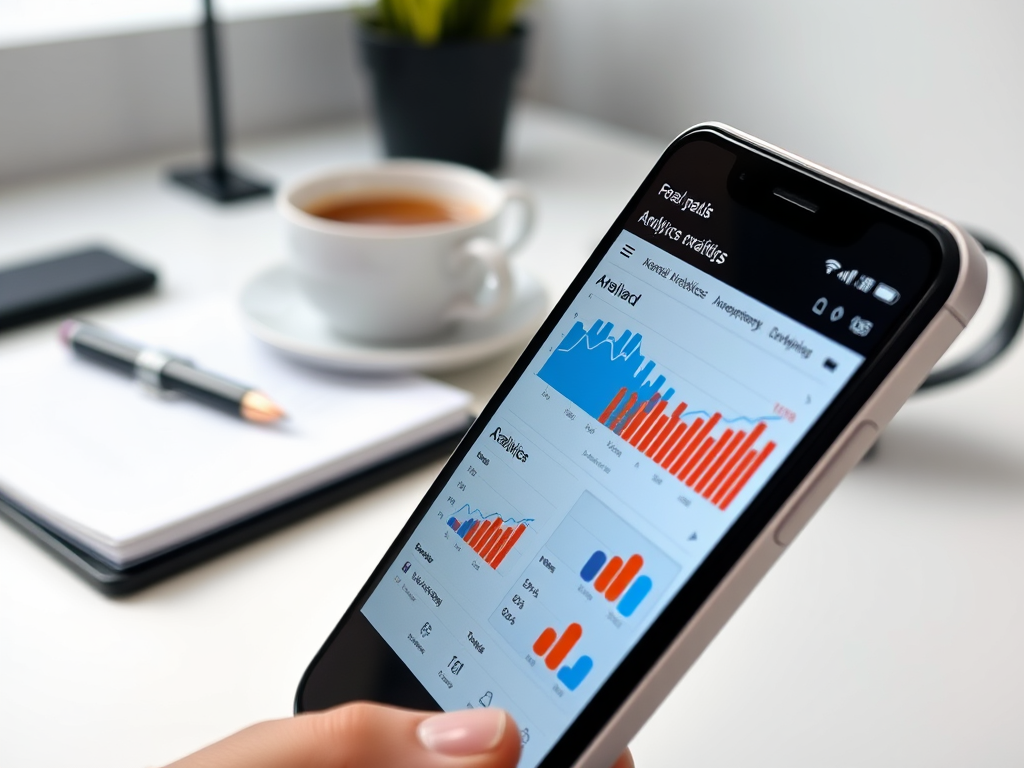In today’s fast-paced digital landscape, social media marketing has emerged as a fundamental pillar for brands striving to connect with audiences and drive sales. As platforms evolve and user behaviors shift, knowing the guidelines to navigate this complex environment becomes increasingly important for marketers. Crafting effective strategies, understanding audience engagement, and creating compelling content are key factors that can mean the difference between marketing success and missed opportunities. With this guide, we’ll explore essential practices to elevate your social media marketing efforts to new heights. By adhering to the outlined principles, marketers will not only find resonance with their target audience but also foster meaningful relationships that translate into brand loyalty and repeat business.
Social media is more than just a platform for posting updates; it is an interactive arena where brands can showcase their personality and enrich their connection with users. Engaging authentically with consumers requires a thoughtful approach, one that is rooted in understanding customer preferences and delivering tailored content. This article will serve as a roadmap to navigate the constantly changing social media landscape effectively. From audience analysis to content creation, and performance measurement, this guide digs deep into each facet of social media marketing. So, whether you are a seasoned professional or a newcomer to the field, you will find actionable insights that can elevate your marketing game.
Understanding the Importance of Social Media Marketing

Social media marketing has become essential for brands looking to engage their audience and drive conversions. It’s critical to understand the landscape and its impact on consumer behavior. Platforms like Facebook, Instagram, Twitter, and LinkedIn are not just networking sites; they act as marketplaces where consumers research products, share experiences, and influence each other’s purchasing decisions. The importance of building a strong social media presence cannot be overstated—it not only enhances brand visibility but also establishes a foundation for trust and credibility. Marketers who effectively leverage these channels can significantly boost their brand’s reputation while directly influencing buying decisions.
A brief overview of how social media platforms have changed over time and their role in modern marketing strategies is necessary for appreciating their potential. Initially designed for personal communications, these platforms have morphed into powerful marketing tools. Understanding the trends and features of each platform is essential for a successful social media marketing strategy. This evolution also means that marketers must remain agile, adapting their strategies to keep pace with the latest developments. Having a finger on the pulse of social media trends ensures that your brand remains relevant and competitive.
Defining Your Target Audience

Identifying your target audience is the cornerstone of effective social media marketing. This section discusses various methods to pinpoint the demographics, interests, and behaviors of your ideal customers. Start by gathering data through surveys, customer feedback, and analytics tools to build a comprehensive profile of your target audience. By segmenting your audience based on different criteria like age, interests, purchasing behaviors, and location, you can better tailor your content and messaging. This personalized approach ensures that your marketing efforts resonate with the right people at the right time.
Introduce popular tools and techniques for conducting audience research, including analytics software and social listening. Below are some valuable tools marketers can utilize:
- Google Analytics: For tracking user behavior on your website.
- Facebook Insights: To understand your audience on Facebook.
- Hootsuite: For social media monitoring and performance analysis.
- SurveyMonkey: For conducting detailed audience surveys.
- BuzzSumo: To analyze content performance and audience preferences.
Crafting a Strategic Social Media Plan
Creating a comprehensive social media strategy is vital for consistency and goal achievement. Here, we explore the key elements required to build your strategy. Each social media platform has its unique audience and best practices, which means a one-size-fits-all approach seldom works. Your social media plan should outline your objectives, target audience personas, content types, and desired outcomes. Ensure that all team members are on board and understand the plan. Investing time in a well-thought-out strategy will save your brand from reactive decision-making in the long run.
Learn how to set Specific, Measurable, Achievable, Relevant, and Time-bound goals that align with your overall marketing strategy. Here are examples of good SMART goals:
- Increase engagement rates by 20% within three months.
- Gain 500 new followers on Instagram in two months.
- Boost website traffic from social media by 30% in six months.
Content Creation Best Practices
Creating engaging content tailored to your audience is critical. This section discusses some best practices for content creation across various social media platforms. It is vital to maintain a consistent brand voice while being flexible enough to adapt content types to suit each platform’s audience. Visual content, storytelling, and providing value should guide your content strategy. Experiment with various formats like videos, infographics, and live sessions to see what resonates best with your audience. Regularly analyze your content performance to refine your strategies.
| Content Type | Best Platforms | Engagement Rate |
|---|---|---|
| Images | Instagram, Facebook | High |
| Videos | YouTube, TikTok | Very High |
| Articles/Blogs | LinkedIn, Facebook | Medium |
Scheduling and Posting Strategies
Timely content delivery can maximize engagement. Explore the best times to post and how to effectively schedule your content for various platforms. Different platforms have different peak times; for instance, posting during lunchtime on weekdays generally results in higher engagement on Facebook, whereas evenings or weekends may work better for Instagram. Use scheduling tools to plan your posts ahead of time, ensuring that you consistently engage with your audience. By monitoring your analytics, you can adjust your posting schedule based on when your audience is most active.
Introduce popular scheduling tools marketers can use to streamline their posting process. Here are some effective options:
- Buffer: For scheduling posts across multiple social media channels.
- Hootsuite: To manage and schedule posts while also engaging with your audience.
- Sprout Social: For monitoring, analysis, and scheduling content all in one platform.
Engaging with Your Audience
Active engagement helps foster community and brand loyalty. Discuss strategies for interacting with your audience, including responding to comments and encouraging user-generated content. Building meaningful relationships with your followers can turn casual consumers into advocates for your brand. Brands can increase their visibility and reach through engagement methods such as polls, contests, and open-ended questions. This two-way communication allows for real-time feedback and creates a sense of community.
Explore methods to build a loyal community on social media, such as hosting contests and regular Q&A sessions. Engaging your audience through community-building activities can significantly enhance loyalty. For example, consider these strategies:
- Host weekly live Q&A sessions to address customer queries directly.
- Create create exclusive content for loyal followers to enhance engagement.
- Encourage participants to share their experiences with your products, showcasing user-generated content.
Analyzing Performance and Adjusting Strategies
This section emphasizes the importance of measuring your social media performance and how to adjust strategies based on data. Regularly analyzing your performance metrics allows you to ascertain which strategies are working and which need refinement. Metrics such as reach, impressions, and conversions provide insights into the effectiveness of your content. Use this data to pivot your strategy where necessary, optimizing your approach to get the maximum return on investment.
Identify key performance indicators (KPIs) that marketers should track to evaluate the success of their social media efforts:
- Engagement Rate: To determine how well your audience interacts with your content.
- Traffic: To measure how much traffic is being driven to your website through social media.
- Conversion Rate: To see how well your social media efforts translate into sales or leads.
Conclusion
In conclusion, the importance of adhering to social media marketing guidelines cannot be overstated. By understanding your audience, creating engaging content, and consistently measuring your performance, you can successfully navigate the digital marketing landscape. Social media is a powerful tool that, when wielded correctly, can foster community, build brand loyalty, and ultimately drive sales. Remember that flexibility and adaptability are vital in this ever-evolving arena. With a commitment to best practices and a data-driven approach, you can enhance your social media marketing effectiveness.
Frequently Asked Questions
- What are the main benefits of social media marketing? Social media marketing allows brands to reach a broader audience, engage with customers directly, and build community, leading to increased brand loyalty and sales.
- How often should I post on social media? Posting frequency varies by platform; generally, consistency is key. Many brands post daily or several times a week depending on audience engagement.
- What types of content work best for social media? Visual content, such as images and videos, tends to perform best, but informative and engaging textual content is also important.
- How do I measure the success of my social media campaigns? Use analytics tools to track engagement metrics (likes, shares, comments) and conversion rates; adjust campaigns based on what the data reveals.
- Can I automate my social media marketing? Yes, many tools allow you to schedule posts in advance and automate responses to some degree, but active engagement is still recommended to maintain authenticity.
